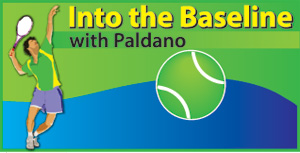Popular fun-side of Tennis
View(s): While the exhibition of the game by the experts excites us and wanting more, and to indulge in following Tennis, it is the participatory side that makes us ‘live the excitement and fun’ of Tennis. It is this aspect that really made Tennis popular in the world, as a ‘recreational’ fun filled sporting pursuit. Recreational Tennis (RT) is the original label of ‘Tennis for fun’ of today. Successive generations find it necessary to change the words used to excite themselves. In a way, it is good, as it brings in a new wave of enthusiasm into the game.
While the exhibition of the game by the experts excites us and wanting more, and to indulge in following Tennis, it is the participatory side that makes us ‘live the excitement and fun’ of Tennis. It is this aspect that really made Tennis popular in the world, as a ‘recreational’ fun filled sporting pursuit. Recreational Tennis (RT) is the original label of ‘Tennis for fun’ of today. Successive generations find it necessary to change the words used to excite themselves. In a way, it is good, as it brings in a new wave of enthusiasm into the game.
In most countries, the enthusiasm to a sport grows and wanes repeatedly. In Tennis, the institution that catered for it were the clubs. With economy pressing more output from everyone, Clubs which promoted individual Tennis don’t seem to get the energy it got 20 years ago. This is true in Europe and elsewhere. In Sri Lanka, we had clubs from Kankesanthurai to Dondara, and from Colombo to Batticaloa. Not anymore. Which also means, in Sri Lanka, it serves little purpose to learn Tennis, if it cannot be played for the rest of one’s life.
Day planned for Tennis
Club Tennis was a way of life in Sri Lanka. It was a congregation of players which provided challenge and partnership. Players even changed clubs stating, another club had better players than the one they are in now. This trend went down when administrations of these clubs did not maintain standards. In the first three decades of post-Independence, the clubs still had standards and the residual energy of the colonial administration to run a club. It was attractive to membership.
There was an English gentleman in Colombo, who planned his day working backwards, to have his first cocktail by 5 in the afternoon, and never later than 6 pm on any working day. RT players did the same planning for the day, to play the first singles by 4 in the afternoon and doubles by 5 pm. One exception to this was Dr Achie Abeygoonawardene who played his first singles at 2.45 pm. The heat did him in.
At one point, club facilities dropped and the administrators had ideas other than to provide good recreational Tennis facilities. This discouraged players enthusiasm and, with the drop in membership, alternative income was sought to run the club. It changed the objectives of the clubs and took RT out of our social life.
Times have changed
RT has found new venues over time. It was the executives of the mercantile sector, top end public servants, professionals and university students who played good RT. Some of them still do, in a few of the good clubs in the cities and on Hotel courts. The first big hotel to have its own Tennis court was the Intercontinental in Fort, while Oberoi was second. In the outstations, Tennis courts popped up at tourist hotels. Only a few permit the use of their Tennis courts to locals. City hotels have a membership system and it is picking up popularity.
The biggest snag for RT is the cost of the game. A good Tennis racquet is on the wrong side of Rs 20,000, and with shoes and balls, it takes a heavy toll cost wise, to appear on court. To enjoy a game of Tennis, it is pertinent to have good Tennis balls. Today, very rarely, good Tennis balls are used at training centres and academies. In other countries, without exception, players carry their own set of Tennis balls which, for a regular player, is good for a week. It is no fun playing with bad balls. This idea was never promoted in Sri Lanka. Clubs had to provide the balls to play.
Starting and staying with Tennis
Literally hundreds take to Tennis annually. Counting the adult players in a country like ours, it must be said that, similar numbers drop off every year. In the study of player development, the history of Serbian Ana Ivanovic came into prominence. It was revealed that, two aspects came out strongly for her success. One was the close proximity of the playing facility, which was almost at her doorstep, and the other was the ‘fun’ Tennis provided during her development years. The latter means an interesting program is as vital as the availability of courts, for Tennis to prosper in a country.
The segments of the population which are most attracted to play Tennis cannot afford to walk away from work anymore. The traffic congestion in most cities in the world takes a better part of the afternoon to get to a court. This leaves Tennis to be a weekend or a holiday activity. Now there is a trend to leave the city on holidays and weekends. So the question as to when they can play Tennis remains unanswered.
Professional season
The global professional season will begin in Brisbane Australia on January 1. The well-run Women’s and Men’s annual professional events certainly give a lot of boost towards Tennis’ popularity. The most salient factor for Tennis is the fun the game could provide in its participation to every player who ventures onto a court. So, the fun part has to be made the priority to keep RT in a land.—Seasons greetings to all.
-George Paldano, Former intl. player; Accredited Coach of Germany; National, Davis-Cup, Federation Cup captain/coach– georgepaldano@yahoo.com


